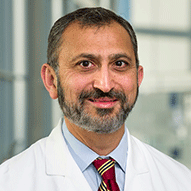Pediatric Gallbladder Disease
What is Pediatric Gallbladder Disease?
Gallbladder disease typically occurs when bile stones – hard and pebble-like – block the cystic duct or the common bile duct. Gallbladder problems are common in adults, but it has become increasingly common in children as well. Increased screening and use of imaging technology, along with increasing childhood obesity, contribute to the rise in diagnosis of pediatric gallbladder disease.
What are the signs and symptoms of Pediatric Gallbladder Disease?
Children typically develop pigment stones (as opposed to the cholesterol, calcium carbonate, protein-dominant variety of gallstones). In addition, they often have symptoms of pain in the upper right side of the abdomen, particularly after eating fatty foods or fried meals. Often the pain resolves spontaneously, however these episodes of colicky pain occur repeatedly and can develop into a serious gallbladder condition called acute cholecystitis unless the gallbladder is surgically removed.
How is Pediatric Gallbladder Disease diagnosed?
An ultrasound helps confirm the diagnosis. Complications may include chronic cholecystitis and biliary colic-type symptoms.
Complete blockage of the cystic duct can result in the sudden swelling and irritation of the gallbladder, known as acute cholecystitis, which could lead to necrosis and the leaking of bile, a serious condition. Further complications could include gallstone pancreatitis, and biliary obstruction with infection.
How is Pediatric Gallbladder Disease treated?
The treatment for symptomatic gallstones, regardless of the cause, is an operation to the gallbladder. Just as in adults, children can almost always have the gallbladder removed with a “minimally invasive” laparoscopic technique.
Pediatric Gallbladder Disease Doctors and Providers
-
 Bradley Barth, MD Pediatric Gastroenterologist
Bradley Barth, MD Pediatric Gastroenterologist -
 Adam Alder, MD Pediatric Surgeon
Adam Alder, MD Pediatric Surgeon -
 Nathalie Brewer, MD Pediatric Surgeon
Nathalie Brewer, MD Pediatric Surgeon -
 Natasha Corbitt, MD Pediatric Surgeon
Natasha Corbitt, MD Pediatric Surgeon -
 Diana Diesen, MD Pediatric Surgeon
Diana Diesen, MD Pediatric Surgeon -
 Lauren Lazar, MD Pediatric Gastroenterologist
Lauren Lazar, MD Pediatric Gastroenterologist -
 Stephen Megison, MD Pediatric Surgeon
Stephen Megison, MD Pediatric Surgeon -
 Megha Mehta, MD Pediatric Gastroenterologist
Megha Mehta, MD Pediatric Gastroenterologist -
 Joseph Murphy, MD Pediatric Surgeon
Joseph Murphy, MD Pediatric Surgeon -
 Samir Pandya, MD Pediatric Surgeon
Samir Pandya, MD Pediatric Surgeon -
 Faisal Qureshi, MD Pediatric Surgeon
Faisal Qureshi, MD Pediatric Surgeon -
 Mark Ryan, MD Pediatric Surgeon
Mark Ryan, MD Pediatric Surgeon -
 David Troendle, MD Pediatric Gastroenterologist
David Troendle, MD Pediatric Gastroenterologist -
 Shabina Walji-Virani, APRN, PNP-PC Nurse Practitioner - Gastroenterology
Shabina Walji-Virani, APRN, PNP-PC Nurse Practitioner - Gastroenterology
Frequently Asked Questions
-
Who is at risk for gallbladder disease?
Those with a history of Crohn's disease, hemolytic disease, obesity, sepsis, sickle cell disease or trauma may be at risk for gallbladder disease.
Children can get the common type of gallstones, especially if there are other family members with a history of gallstone disease. Genetic conditions and certain medications may also increase incidence. Prepubescent boys and girls have an equal incidence of gallstones. In adolescence, however, girls develop the disorder more frequently than boys.